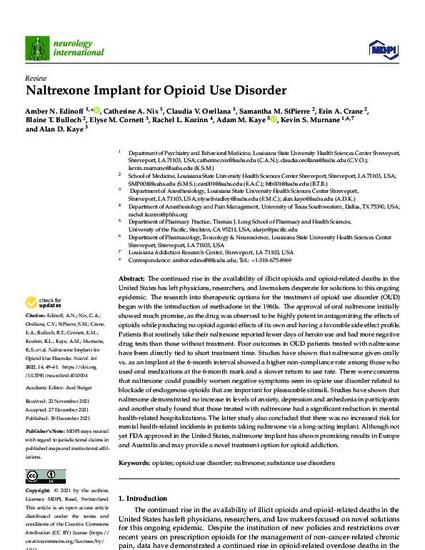
The continued rise in the availability of illicit opioids and opioid-related deaths in the United States has left physicians, researchers, and lawmakers desperate for solutions to this ongoing epidemic. The research into therapeutic options for the treatment of opioid use disorder (OUD) began with the introduction of methadone in the 1960s. The approval of oral naltrexone initially showed much promise, as the drug was observed to be highly potent in antagonizing the effects of opioids while producing no opioid agonist effects of its own and having a favorable side effect profile. Patients that routinely take their naltrexone reported fewer days of heroin use and had more negative drug tests than those without treatment. Poor outcomes in OUD patients treated with naltrexone have been directly tied to short treatment time. Studies have shown that naltrexone given orally vs. as an implant at the 6-month interval showed a higher non-compliance rate among those who used oral medications at the 6-month mark and a slower return to use rate. There were concerns that naltrexone could possibly worsen negative symptoms seen in opiate use disorder related to blockade of endogenous opioids that are important for pleasurable stimuli. Studies have shown that naltrexone demonstrated no increase in levels of anxiety, depression and anhedonia in participants and another study found that those treated with naltrexone had a significant reduction in mental health-related hospitalizations. The latter study also concluded that there was no increased risk for mental health-related incidents in patients taking naltrexone via a long-acting implant. Although not yet FDA approved in the United States, naltrexone implant has shown promising results in Europe and Australia and may provide a novel treatment option for opioid addiction.
Available at: http://works.bepress.com/adam-kaye/173/
